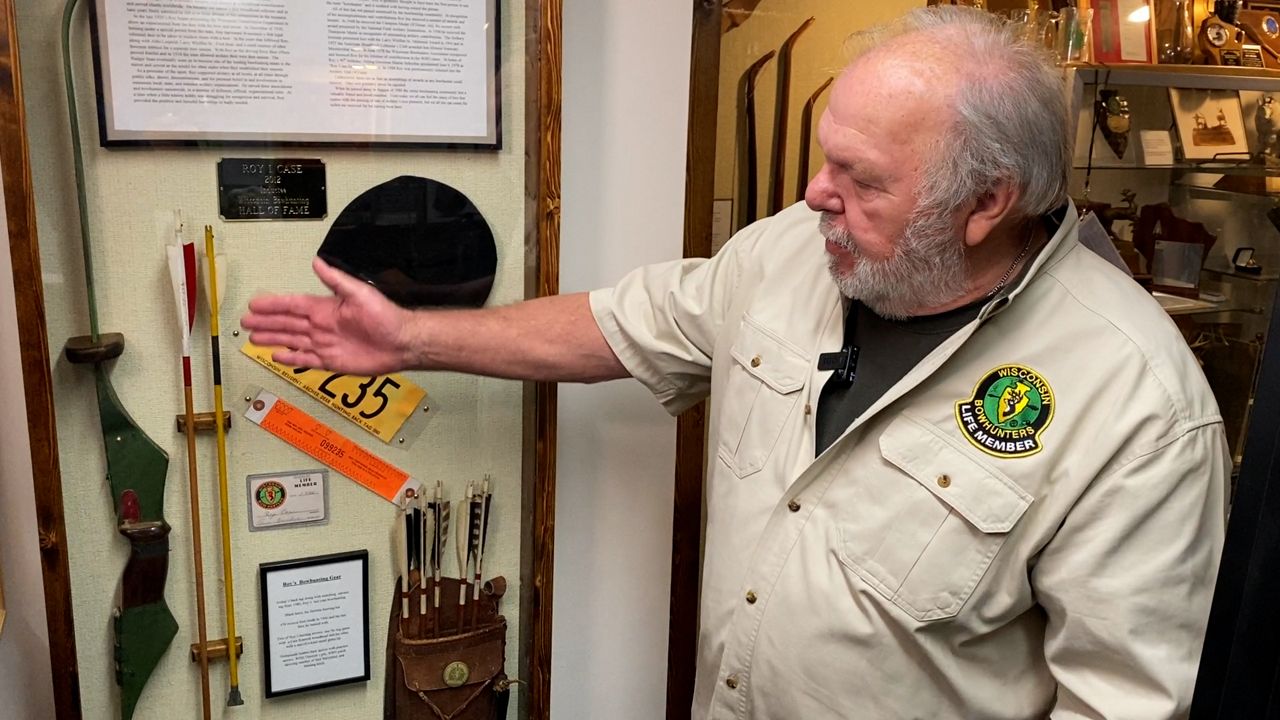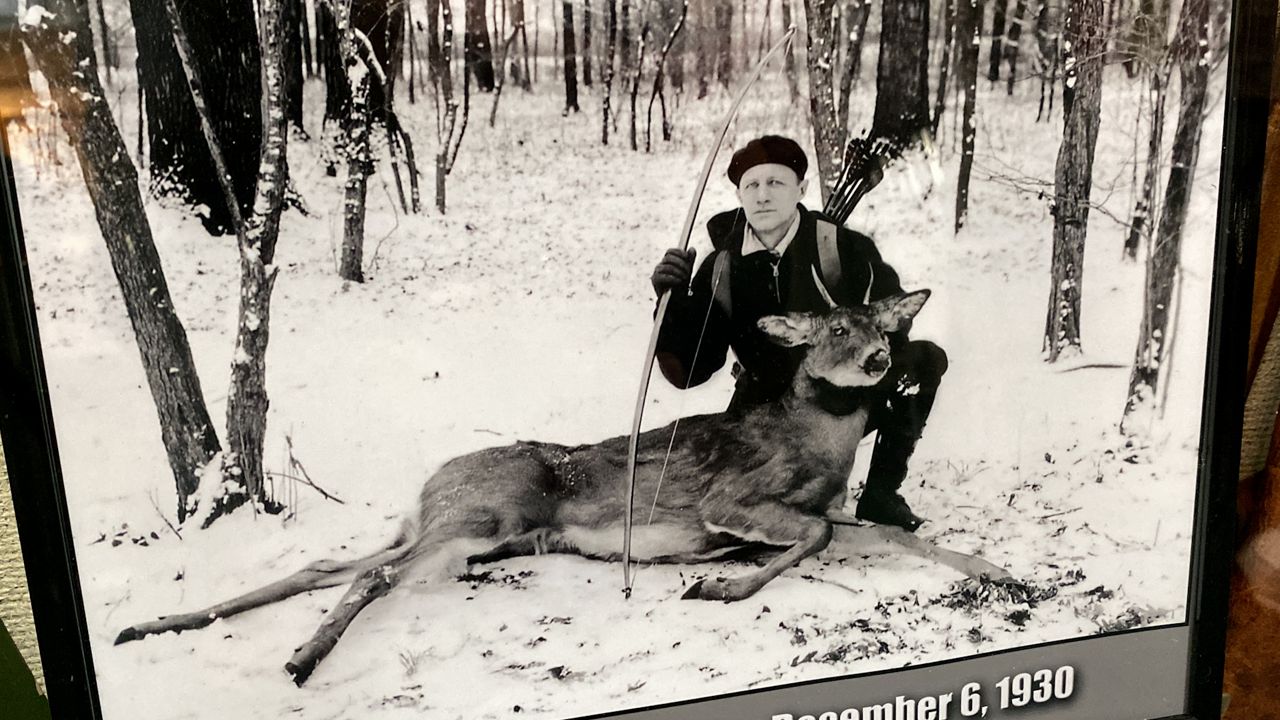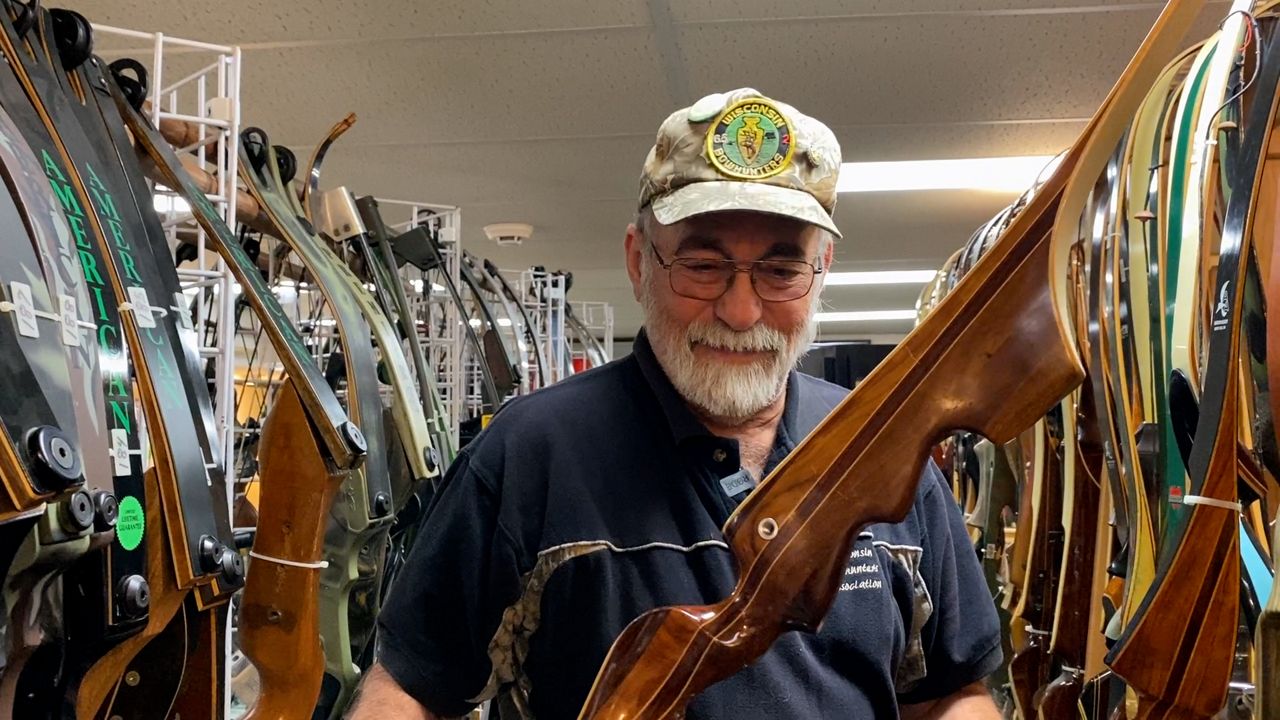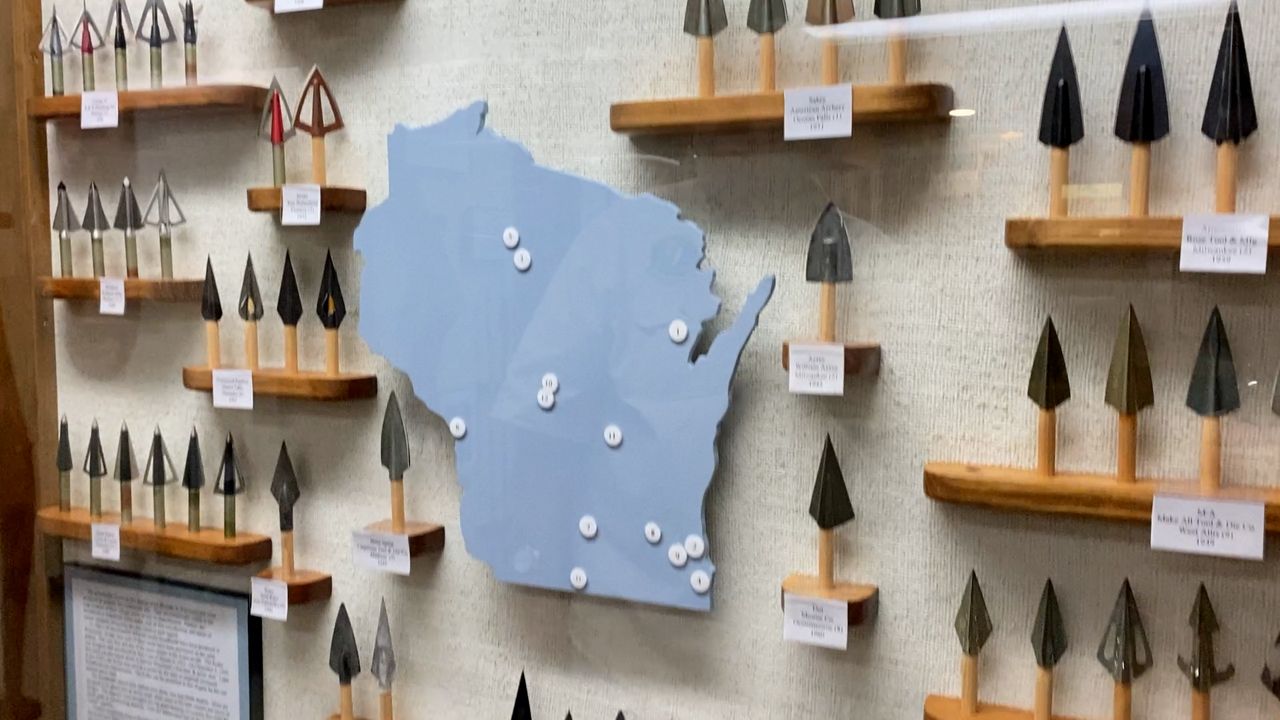CLINTONVILLE, Wis. — As another archery season begins, the Wisconsin Bowhunting Heritage Foundation Museum in Clintonville tells the story of how this tradition began.
For Bill McCrary, Wisconsin is the mecca of bowhunting. The state became involved in bowhunting history right from the beginning of the modern era.
“Wisconsin was a leader in many fields of bow hunting,” said McCrary, Wisconsin Bowhunting Heritage Foundation Director. “It seems like it started that way back in the 1920s and the early 30s, and it just seems to have never stopped.”
He built many displays at the museum and said the modern era in the state began with Roy Case.

“Virtually everything bowhunting today in Wisconsin has his fingerprints on it,” explained McCrary. “He was that big of an influence. He was that involved for his entire life.”
Case, whose grandfather started the Case tractor company, was the first person in the state to take a deer with a bow during an official hunting season.
“Roy Case had to get special permission from the Wisconsin Conservation Department,” said McCrary.
It was 1930, and Case carried an official permission letter with him during the gun season to ensure his bow hunt was legal.
The museum displays Case’s deer mount, bow, arrow and broadhead from the hunt. Case made the equipment himself and even started his own broadhead company.

In 1934, Wisconsin held its first official bowhunting season and sold 40 licenses. It’s a bittersweet moment in the sport's history.
“The one deer that was taken, was taken by a fellow named Bill Ostlund from the Lincoln Park Club in Chicago, Ill.,” he said. “So, Wisconsin bowhunters kind of let that one slip by them.”
Museum trustee Don Rogalski enjoys sharing bow hunting history with hunters and non-hunters. The museum is informative and sometimes nostalgic.
“A lot of people point out, I remember grandpa had one of them," said Rogalski.

Many bow manufacturers called Wisconsin home, and Rogalski couldn’t help but admire the craftsmanship on a collection of American Archery bows made in Oconto Falls.
“Back in those days, they made bows that looked like a piece of furniture. They made them really pretty,” said Rogalski. “Wisconsin had a big impact on archery throughout the entire world, and we’re trying to just hang onto that.”
Those working to preserve the state’s rich history do so with a purpose.
“A lot of this history will be lost, and if we don’t preserve it, it will be gone forever,” said McCrary.

The museum relies on donations and volunteers to keep their admission free for the public.
“We recognized that Wisconsin had a rich bowhunting history, and we realized that some of it was starting to disappear because bow hunters were getting older,” McCrary said. “We wanted to preserve that history, protect it, and promote it.”
Though some would rather forget about the contribution of Bill Ostlund from Illinois, through their efforts, many great stories are kept alive within the museum.



